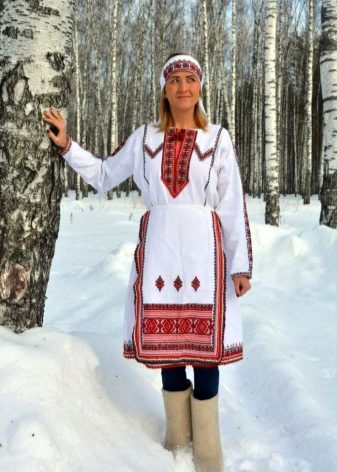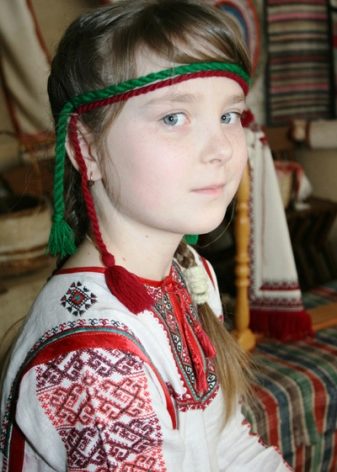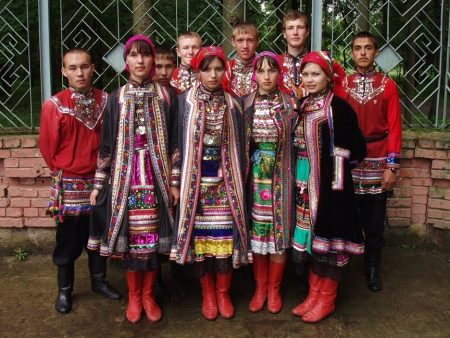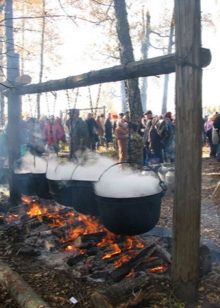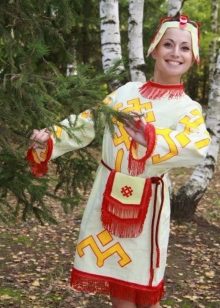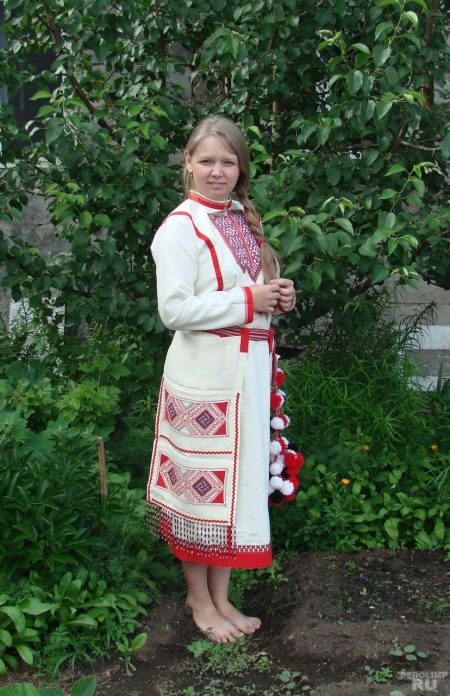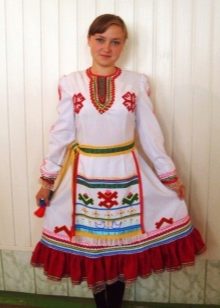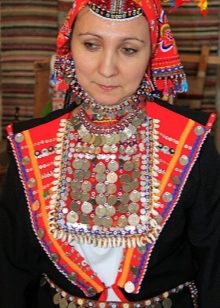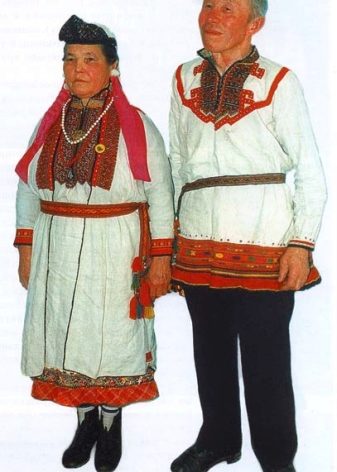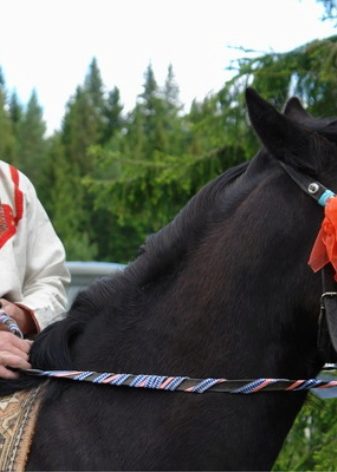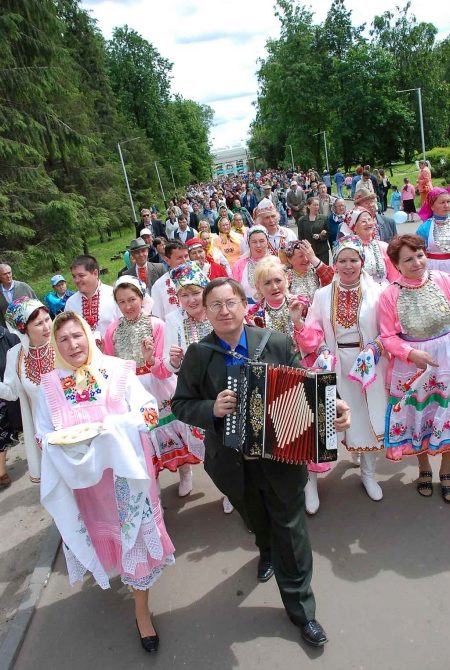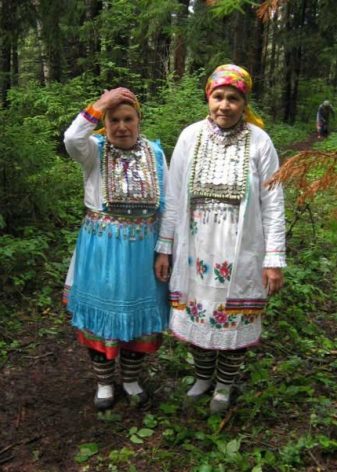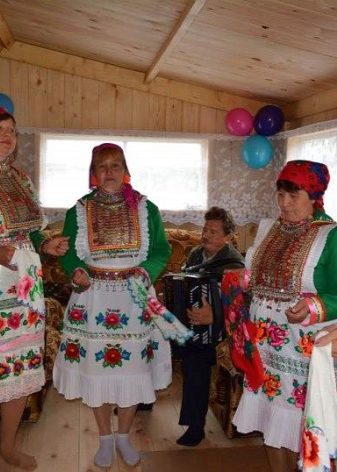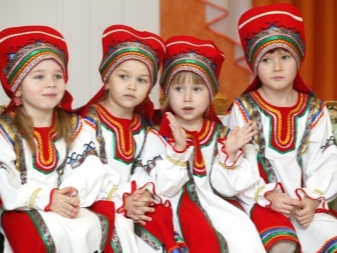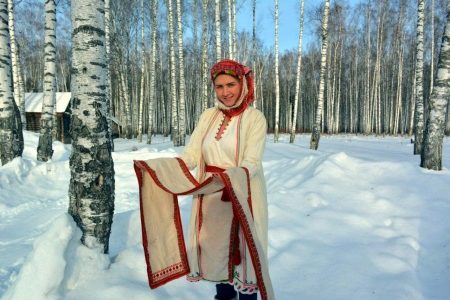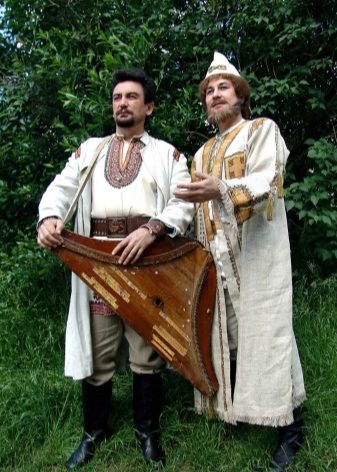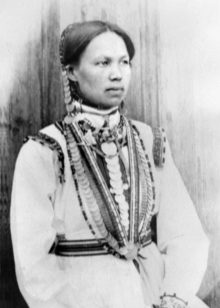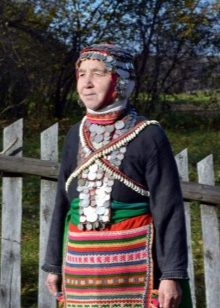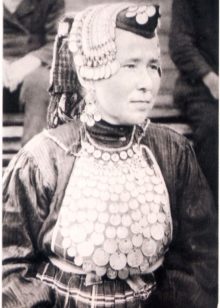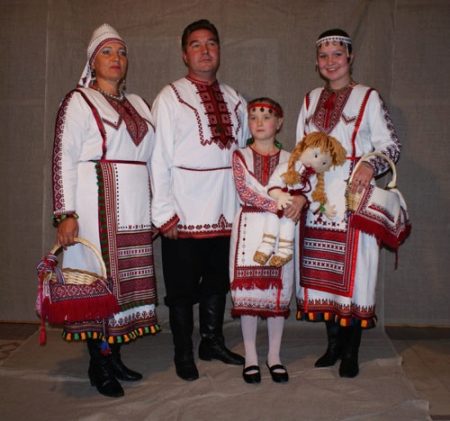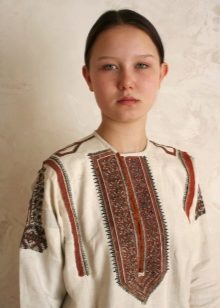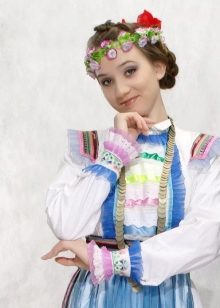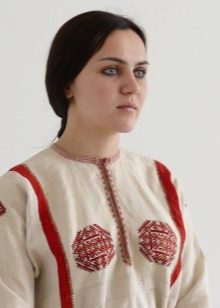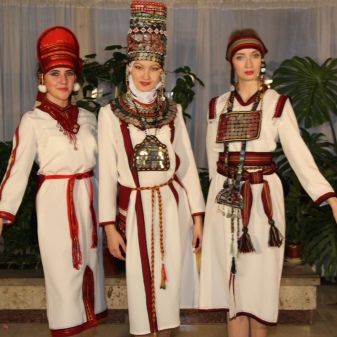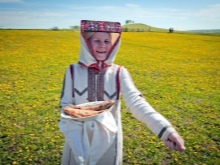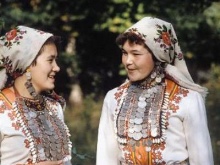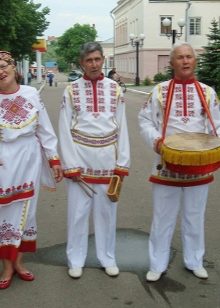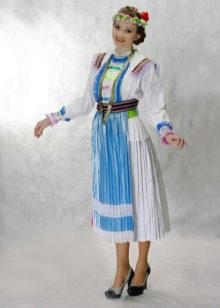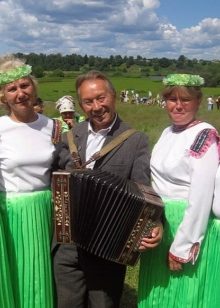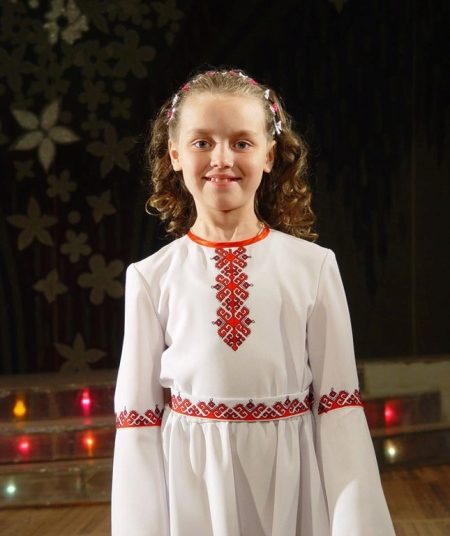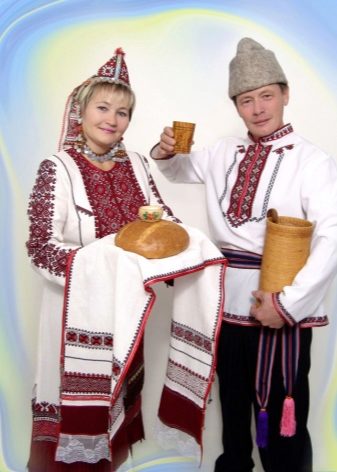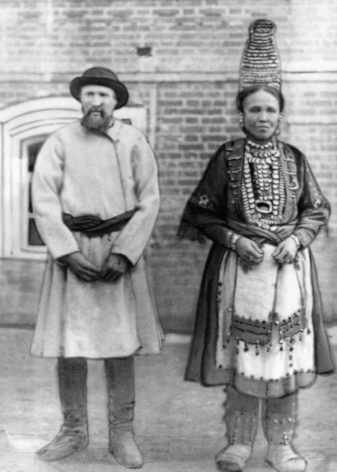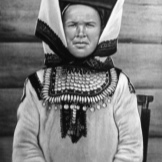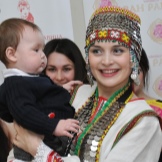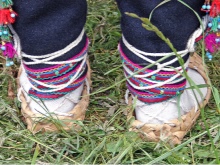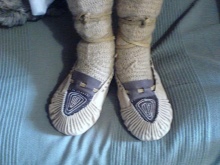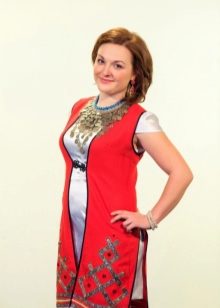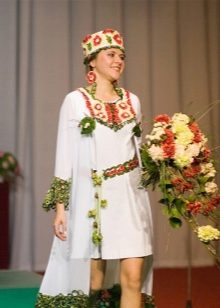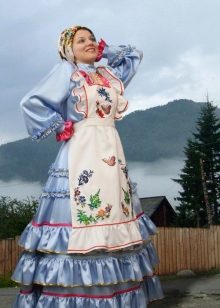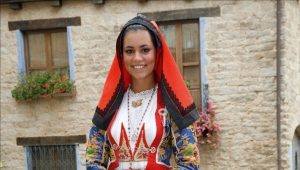Mari national costume

National costume is more than clothing. He tells about the peculiarities of the people, their culture, values and life. Some outfits are akin to objects of art, for example, a bright and colorful costume of the Mari people.
A bit of history
Marians belong to the Finno-Ugric peoples. They are called the last pagans in Europe, because it is difficult to believe, but, despite the accepted Christianity, many remain true to paganism and the rites associated with it.
Their ceremonies, it should be said, are very interesting. So, they all pass in a sacred grove - a specially designated place in the forest. There as a sacrifice bring geese and ducks. The whole life of the Mari is connected with mysticism. Specific funerals of the dead and “feeding the dead” could not affect the national costumes and ornaments.
Features
National Mari costume has a number of features that distinguish it from the vestments of other nations.
Colors and shades
The traditional color for the Mari national costume is white. However, it is impossible to call such a boring suit, because the rich embroidery decorated the white tone. In the first samples, wool and cotton for embroidery had dark shades such as black, dark blue, burgundy and brown.
Time passed, and the main shade in the embroidery of the national Mari costume was a red hue. Black and dark blue shades of thread framed it. Dyes were obtained from herbs and plants, and colors varied depending on the intensity of the mixture.
Later, with the widespread distribution of aniline dyes, embroidery on costumes became even brighter. Pink, orange, yellow and green shades skillfully folded into an interesting ornament.
Speaking of embroidery, there were gender, age and social symbols, floral and geometric patterns. Each of them was carried out in bright colors, which, of course, brought good luck and good to man.
Fabric and cut
Clothing for the Mari was made from canvas. Got it from hemp or flax. Women were engaged in production. It was so painstaking that it took no less than half a year to do it. Not surprisingly, the white canvas was the pride of a glorious hostess.
Later, the Mari national costumes were influenced by the Russian costume and were made of cotton threads. Differing at the same time in special color and a saturation of shades.
Sheepskin was used for warm clothes. The craftsmen spun out of wool and were engaged in tailoring warm fur coats from sheep skins. The process of dressing the skins was carried out in several stages, and the skin itself as a result was distinguished by excellent quality and warmth.
The underwear of the Mari had a tunic-like cut. The canvas was bent, creating the back and front part of the product. Depending on the area of residence, each neckline had a certain shape and was traditionally fastened with two strings in the center. Tuvyr girdled with leather and fabric belts, which were located amulets, knives and other necessary items.
Varieties
Women's and men's clothing Mari has always differed from each other. It is said that Mari women liked to dress in rich jewelry, which reached weights up to 35 kg.
But let's start with a suit for men. In addition to a tuvyr (shirt) with a belt, the Mari costume included pants. They were also made of white canvas, and the width varied depending on the area, which the people lived. Men did not forget about the caftan, which is an integral part of the national traditional costume.In the summer, it was sewn from canvas, warm - from white and black cloth.
Costumes for women differed from men in a wide variety. It should be said that the basis of the apparel was the same tuvyr. They decorated the women's shirt with glory, putting embroidery on the cut on the chest, on the sleeves along the entire length and along the edges, as well as on the hem. Completed the model and ribbons, beads and buttons. Women's shirt was the pride of women, because each model was unique and kept in itself the customs and foundations.
Just like in a men's suit, under the shirt of the mari they put on pants made of canvas. Their wide and narrow step depended on the locality, for example, the Eastern peoples clothed in free and spacious models.
Women's caftans had their variations. Short waistlines were designed for summer wear, straight and tunic-like - gave warmth and comfort during the cold season.
Do not forget T-shirts and apron. The traditional version was produced in two forms: with the breast and without the breast. Both had a rich embroidery.
The Mari costumes for children resembled adults; however, for girls, shirts could have bright flounces around the hem of sleeves and hem.
Accessories and shoes
The Marians paid attention to the choice of hats. In the men's wardrobe as a summer dress, the classic were felted hats. The casual look was supplemented with a black hat, the solemn look white. Later, these models ousted cap. In winter, men wore warm hats made from sheep's wool and earflaps.
If men's hats were quite traditional for a modern person, then women's hats differed in a variety of styles, sometimes surprising and certainly memorable. Married women wore frame headdresses, to the edges of which a scarf was fastened. Frequently, ordinary scarves were worn for everyday use. In winter, ladies wore high hats with fox or beaver fringe.
Speaking of shoes, bast shoes, leather boots and felt boots were considered traditional models for men and women. The first was an option for everyday look. Leather boots made of soft leather were worn together with bast shoes or separately, but only for solemn occasions, an interesting solution was to skin the leather on the bottom of the boot. Boots for women and men were warm shoes for the winter cold. The wealthy Mari acquired their factory versions, complemented by elaborate embroidery.
Modern models
Until now, the Mari national costume has not lost its popularity. Becoming part of the wedding or solemn image, he brings distinctive notes of this rich culture.
- A white tunic with a red vest, complemented by gold embroidery and a coin-shaped jewel is distinguished by its modern forms with a national color palette.
- A wedding dress with a cropped shirt and a tunic-like caftan with embroidery and satin ribbons is a vivid image for the bride, remembering her roots and customs.
- A costume consisting of a satin dress with frills and an apron with a breast will be a suitable option for a national celebration. Floral ornament adorns the festive apron.
